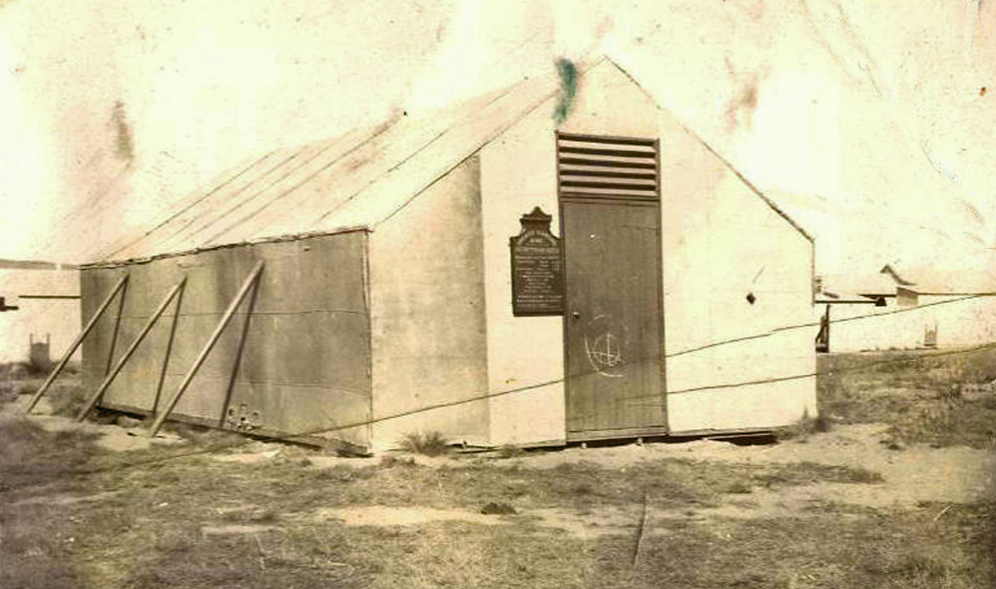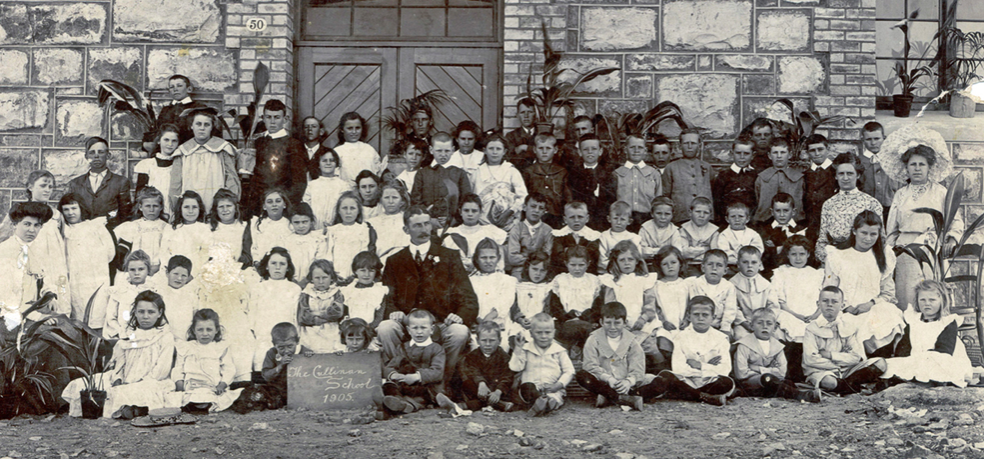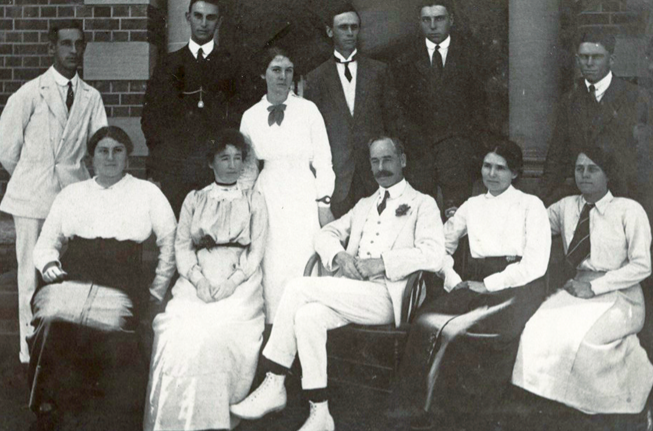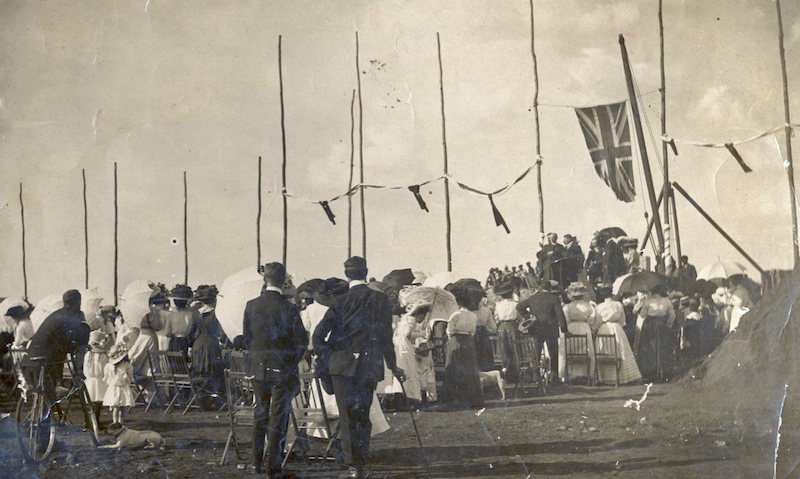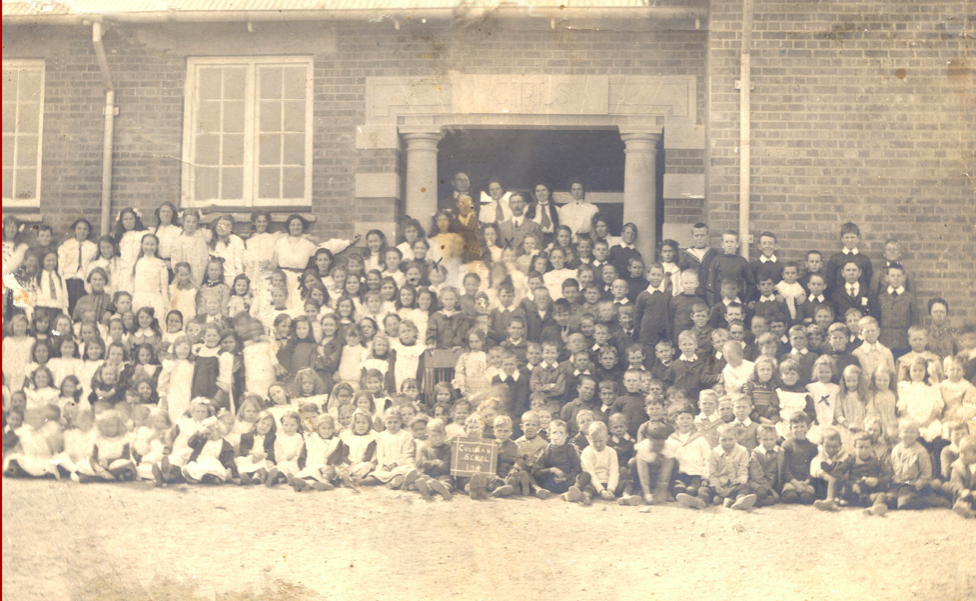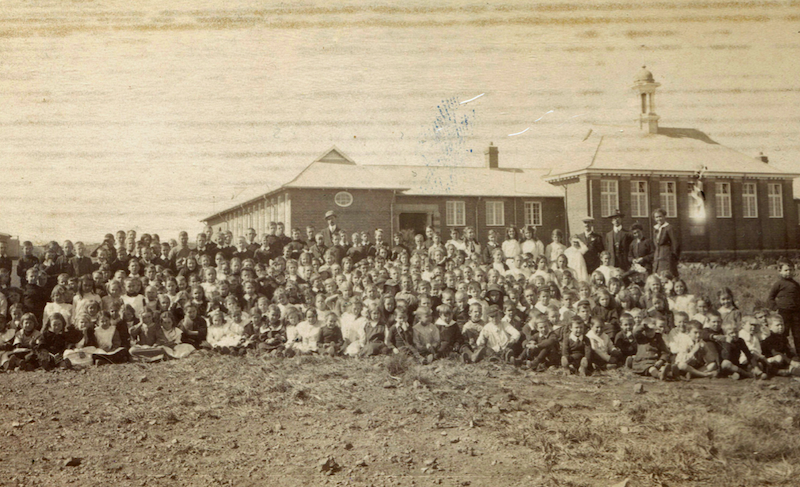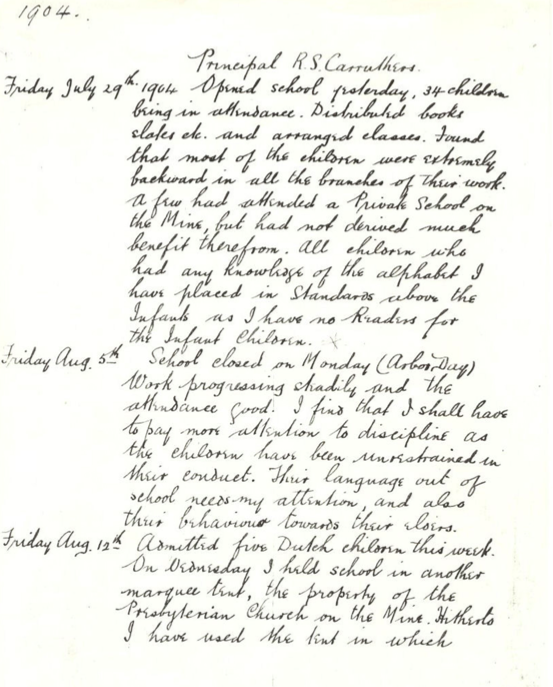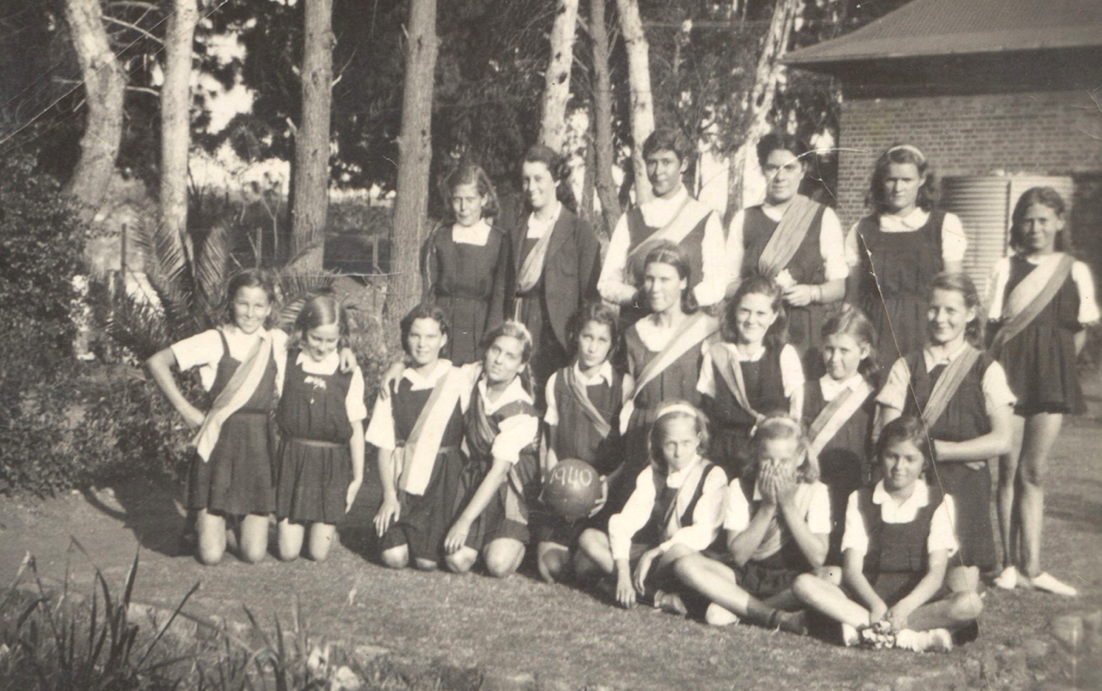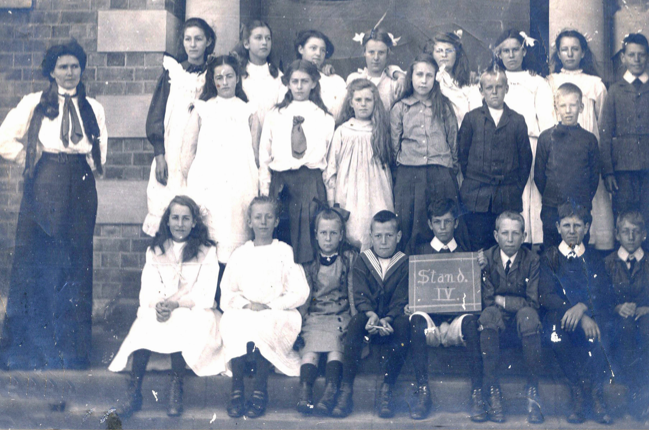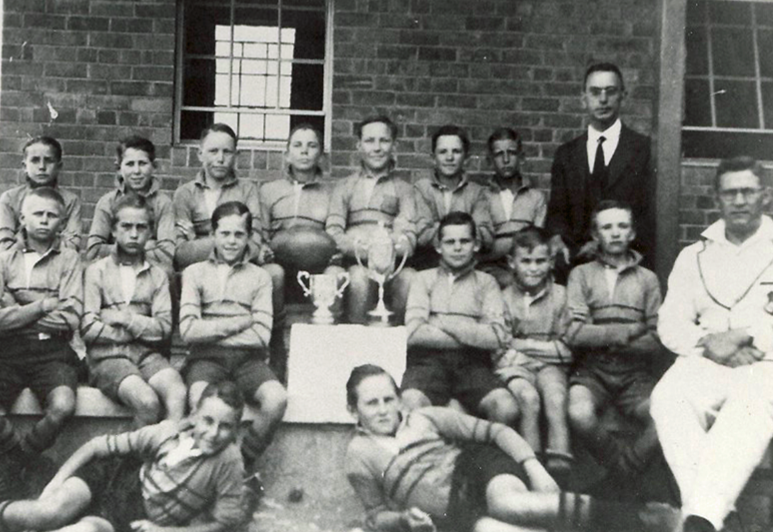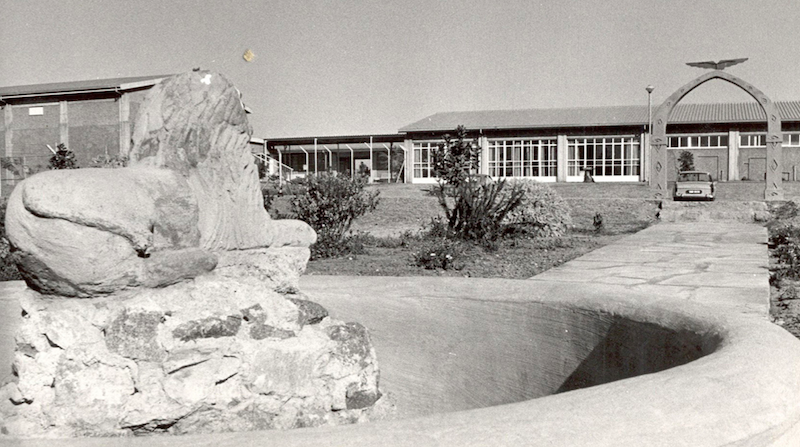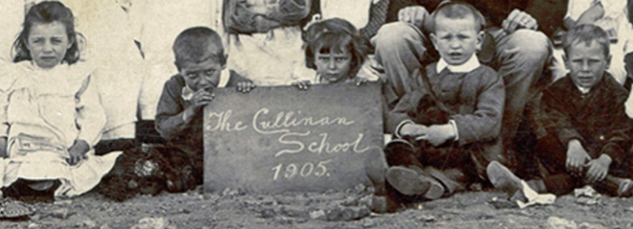
Disclaimer: Any views expressed by individuals and organisations are their own and do not in any way represent the views of The Heritage Portal. If you find any mistakes or historical inaccuracies, please contact the editor.
Below are a few short extracts on the history of the Cullinan School taken from John Lincoln's book 'Stories from a Diamond Mine'. The article forms part of a larger series on the history of Cullinan (click here to view).
The Cullinan School was opened by Mr RS Carruthers in a tent. They later moved into a tent that was also the first church in the village named the Presbyterian Church.
Presbytarian Church used by the Cullinan School
In October of the same year Mr AE Underwood arrived and took charge of the school. There were 52 pupils on the books at that time. Mr Underwood would remain as headmaster of the school until his sudden death in 1914.
Albert Edward Underwood
Mr Underwood and pupils from Cullinan School in 1905
Mr Underwood and staff at Cullinan School
On the 28th March 1905, the school moved into their new building, the “Recreation Hall”. On the 10th February 1910 lightning struck. The flash was seen by men at the hotel, who at once ran over and did everything to save the school, but the building was very soon gutted. Some of the cupboards were broken open and the contents thrown on the floor, either inside or outside the hall. Very little was saved, for what was not burnt was ruined by water or blown away.
On 23rd February it was back to tent life again. Two tents had been supplied by PWD and the mine lent chairs. Senior school grades occupied No 1 tent, and Std 1 occupied No. 2. “The noise and heat about midday make good work impossible. The red dust makes books very dirty.” There were 260 pupils on the roll.
A contemporary article described the new school as follows:
The foundation stone of the new Government School at Premier Mine was laid on Saturday afternoon by Mrs TM Cullinan, wife of the district M.L.A. The new building, which replaces the old school that was struck by lightning and gutted in the early part of the year, has a frontage of 187 feet and is 112 feet wide. It contains 10 classrooms, exclusive of teachers' rooms, storerooms, and other conveniences. There are two entrance halls, one for boys and the other for girls; also a central hall, measuring 55 feet by 31 feet inside, the grand entrance to which is faced with stone and relieved with massive pillars. The school is of the newest type, providing accommodation for 400 pupils. The dome is 48 feet from the ground, and fitly crowns the magnificent edifice, whose foundations are of local stone, above the plinth of which rise the red-brick walls. The lavatories and cloakrooms are paved with granolithic, the water supply being taken from the Wilge River, 26 miles away. The class-rooms are to be provided with electric light and equipped with the latest appliances. The school grounds, covering an area of 900 by 400 feet, fenced and gated, have been generously handed over to the Minister of Lands by the Premier (Transvaal) Diamond Company. The site is one of the most prominent on the mine, and is admirably suited for educational requirements. The frontage faces Pretoria on the west and to the north the Bushveld. As the pupils are at present housed in tents, the completion of the new school will be as welcome a change to the teachers as to the children. It is expected that the new buildings will be completed and ready for occupation within six months. The architect is Mr. P Eagle, and the contractors Messrs. Prentice and Mackie.
Laying the foundation stone
Opening of the Cullinan School in 1911
Pupils outside Cullinan School in 1911
Helen Elizabeth Martins was born in 1897 in the village of Nieu Bethesda in the Eastern Cape; she was the youngest of the six living children born to her parents Petrus and Hester Martins. Her early schooling was in Nieu Bethesda and later she attended teachers training college in Graaf-Reinet from 1915 until 1918. Helen taught for a short time at Wakkerstroom before she married Johannes Pienarr in 1920. In 1921, probably now estranged from her husband, she started working at the Cullinan Primary School, which shortly afterwards was split into English and Afrikaans units. She was registered in her married name of Mrs H Pienarr. It is unknown on what date she left the Cullinan School. She was divorced from her husband in 1926 and little is known of her life during these years. Due to her mother becoming ill, Helen returned to Nieu Bethesda sometime between 1927 and 1929, when she was about 30 years old. By the time she was 47 years old both her parents had died. Helen had, by now, become somewhat of a recluse and between then and her death in 1976 she started creating what is now known as the “Owl House.” In 1989 the Owl House was declared a provisional national monument.
Below are a few more photos from the school's history:
First entry in the Cullinan School journal 1904
1940 Netball Team
Standard Four class at Cullinan School - unknown year
Cullinan School Rugby Team - unknown year
Fountain built by Italian POWs outside Cullinan School
Comments will load below. If for any reason none appear click here for some troubleshooting tips. If you would like to post a comment and need instructions click here.

